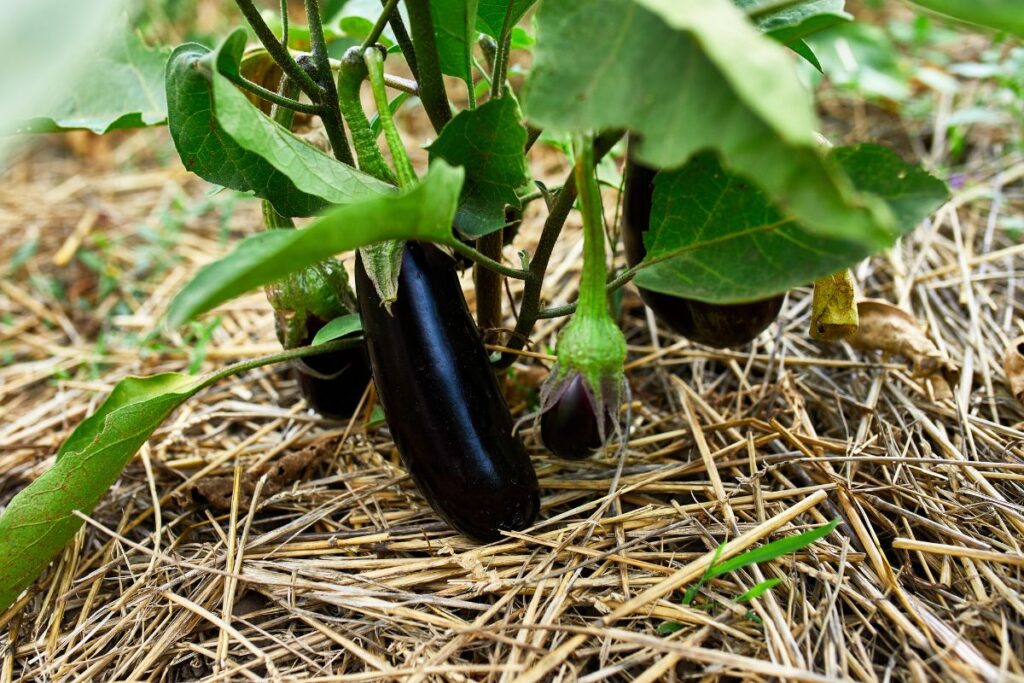Aubergines, also known as eggplants, are versatile and nutritious vegetables that have been enjoyed by various cultures for centuries. With their glossy purple skin and creamy flesh, aubergines not only add vibrant colors to culinary creations but also offer a unique flavor profile.
To truly appreciate these delightful vegetables, it is essential to understand where they grow naturally and the environments in which they thrive. In this article, I’m going to brief you about the areas where aubergines grow naturally. Therefore, keep reading until last to get the most useful information about this topic.
Let’s start.
Historical Background
The origins of aubergines can be traced back to ancient times. They were first cultivated in Asia over 4,000 years ago, specifically in the regions of India and China. From there, aubergines gradually spread to other parts of the world through trade and exploration.
The cultivation and usage of aubergines expanded across different cultures, including those in Europe, the Middle East, and Africa.
Natural Habitat of Aubergines

Aubergines grow best in warm climates with abundant sunlight. They require well-drained soil, rich in organic matter, and thrive in regions with a long growing season.
The natural habitat of aubergines encompasses various areas around the globe, including the Mediterranean, Southeast Asia, the Middle East, and Africa. Each of these regions provides the ideal conditions for aubergines to flourish.
Regions Where Aubergines Grow Naturally

Aubergines have adapted and thrived in different regions worldwide. Some of the primary areas where aubergines grow naturally include:
Mediterranean Region
The Mediterranean climate, with its long, hot summers and mild winters, provides ideal conditions for aubergine cultivation. Countries such as Italy, Spain, Greece, and Turkey are known for their extensive cultivation and diverse use of aubergines in their traditional cuisines.
Southeast Asia
Aubergines are widely grown and cherished in Southeast Asian countries like Thailand, Indonesia, and India. The tropical climate, with its high humidity and ample sunshine, creates an excellent environment for aubergine cultivation.
Middle East
Countries in the Middle East, including Lebanon, Syria, and Iran, have a long history of aubergine cultivation. The warm, arid climate and fertile soils of these regions support the growth of aubergines.
Africa
Various regions in Africa, such as Egypt, Morocco, and Nigeria, have been cultivating aubergines for centuries. The warm climate and fertile lands in these areas provide favorable conditions for aubergine growth.
Related Reading:
- Growing Brinjal at Home: A Complete Guide
- How to Grow Eggplant on a Trellis?
- What Are Eggplants Called in England?
Aubergine Consumption and Cuisine
Aubergines are widely celebrated for their culinary versatility. They feature prominently in many traditional dishes around the world. In Mediterranean cuisine, aubergines are central to popular dishes like moussaka and ratatouille.
In Asian cuisines, aubergines are used in stir-fries, curries, and pickled preparations. Middle Eastern cuisines incorporate aubergines in dishes such as baba ganoush and maqluba, showcasing their rich flavors.
The soft and creamy texture of cooked aubergines makes them an excellent ingredient for dips, spreads, and vegetarian dishes. Their ability to absorb flavors from spices and sauces adds depth to any recipe.
From smoky grilled aubergine slices to hearty stuffed aubergines, there are endless possibilities to explore when incorporating aubergines into your culinary repertoire.
Global Demand and Trade of Aubergine

The popularity of aubergines has resulted in significant global demand, both in fresh and processed forms. Commercial production of aubergines is widespread, with major producers including China, India, Turkey, and Egypt.
Aubergines are not only consumed domestically but also traded internationally. The export of aubergines contributes to the economic growth of producing countries and satisfies the demand in regions where aubergines do not grow naturally.
This global trade allows people from diverse cultures to enjoy the culinary delights of aubergines.
Related Reading:
- Stages Of Growing Pumpkins
- Ants on Zucchini Plants: How to Keep Them at Bay?
- How To Identify and Prevent Brown Spots on Cucumber Leaves?
Conclusion
Aubergines, with their rich history, diverse culinary uses, and nutritional benefits, has become a beloved vegetable worldwide. From their natural habitats in the Mediterranean, Southeast Asia, the Middle East, and Africa to their global popularity and trade, aubergines have left an indelible mark on the culinary landscape.
Whether you enjoy them in a traditional moussaka, a spicy Indian curry, or a contemporary fusion dish, aubergines offer a delightful combination of flavor, versatility, and health benefits.
So next time you savor the unique taste and texture of an aubergine dish, remember the natural habitats where these wonderful vegetables grow and appreciate the journey that brings them to your plate.







